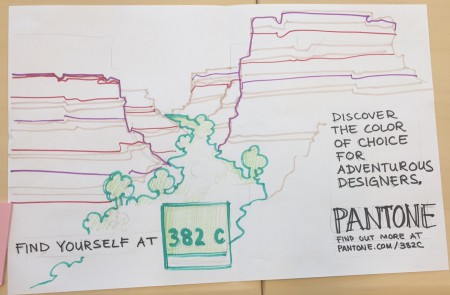Do you hate job interviews? Almost nobody likes interviews. Hiring managers can be vague about the work. Candidates say whatever they think the interviewer wants to hear. Team members spend long hours talking to prospective talent —then don’t agree on who to pick. So what can you do about it? Well, when a recent opening came up for a graphic designer, we decided to take an Agile approach to the recruitment process and the results were so overwhelmingly positive, we wanted to share them.
Step 1: The job description
Our Global Email Creative team felt it was critical to hire someone very good at collaborating and open to Agile values and principles. So, although we wrote the usual required skills in the job description (in this case, design expertise) we also outlined desired attitudes like, “You believe in collaboration and are comfortable with healthy debate” and “You have a growth mindset open to modern Agile values and principles and working in self-organizing teams.”
Step 2: The phone screenings
Would-be designers participated in two phone calls or video chats with our team. They were asked questions like, “Have you ever had to work outside your expertise to move a project along?” and “What was your greatest failure?” The goal was to see whether candidates take responsibility for their actions and mistakes, and what they ultimately gained from the experience. We were looking for a readiness to learn and share credit and it worked: we quickly and efficiently filtered out three candidates.
Step 3: The Co-Creation Exercise
 In the past, we invited final candidates to two rounds of interviews, each lasting half a day and involving five or six people. This time, we developed a program built around a one-hour hands-on exercise: the candidate worked with a cross-functional team – a designer, copywriter, project manager, and marketing partner – on a realistic brief requiring creativity and collaboration, but didn’t require a knowledge of our products.
In the past, we invited final candidates to two rounds of interviews, each lasting half a day and involving five or six people. This time, we developed a program built around a one-hour hands-on exercise: the candidate worked with a cross-functional team – a designer, copywriter, project manager, and marketing partner – on a realistic brief requiring creativity and collaboration, but didn’t require a knowledge of our products.
One brief requested an advertisement for an ink supplier to generate more demand among print designers for a specific shade of green (PANTONE® 382 C). Another requested a billboard to cheer up the residents of a city expecting to receive 200 consecutive days of rain. The group worked together for 50 minutes, allowing the team to observe the candidate’s problem-solving skills, ability to collaborate, take feedback, and respond constructively. Then, for ten minutes, the candidate presented the team’s solution, demonstrating their ability to explain creative ideas and design decisions.
And what happened?
 We immediately decided on the successful candidate with a very high degree of confidence. Rather than relying on a resume and artificial interviews, our team had observed her artistic flair and eye for design, as well as her aptitude for collaboration.
We immediately decided on the successful candidate with a very high degree of confidence. Rather than relying on a resume and artificial interviews, our team had observed her artistic flair and eye for design, as well as her aptitude for collaboration.
But how did the candidates feel?
Well, one of them emailed us to tell us exactly how they felt and here’s what they said:
“When I was there at the office, everybody was so nice and friendly that it really felt like a welcoming atmosphere that I’d be crazy to not want to be a part of. So, if you were still having any doubts about this new type of interviewing process, then just know that I personally thought it was awesome and I wish more companies would carry themselves the same way Vistaprint does.”
So what did we learn?
We learned that the co-creation evaluation technique can be used for any job position where collaboration and relationships are important. In fact, co-creation should be universally applicable in any Agile company. It signals to candidates that collaboration and an Agile mindset are at least as critical to us as any specific skill. It’s also the best way to make sure we are getting the right person on board so I would encourage anyone to try it.
Contributed by Jon Friedman, Vistaprint Agile Analyst
